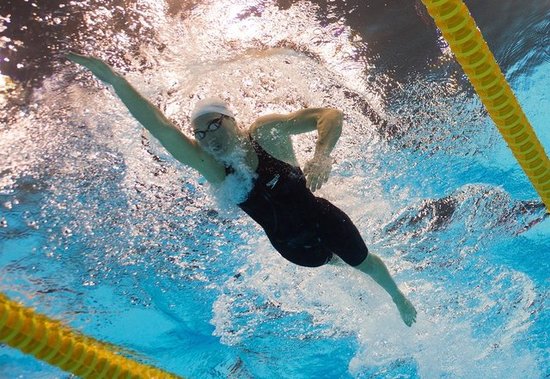When it comes to shape up, going to the pool maybe not the first thing that comes to mind. Yet, it should be. Not only could you burn up to 400 calories in an hour, you’ll also rev up your metabolism and firm up your entire body without putting stress on your joints. However, if you want those benefits, you need to do the proper form and technique. Whether you’re a beginner or looking to improve your swimming, there are some common mistakes we’re all guilty of.
1. Holding your Breath
When we’re little or first learning how to swim, many of us are taught to take a deep breath, hold it and put our faces in the water. But if you do that, you’re burning oxygen for fuel. Imagine this. If you’re out running a 5K, are you going to hold your breath and run? Of course not. Why not? Because it deprives your muscles of the much-needed oxygen.
How to fix
First, practice on dry land. Take a deep breath in using your mouth. Then, start to exhale through your nose slowly. As you do this, hum. If you hum while you breathe out of your nose, you’ll be able to maintain a proper pace. That is, you’re forced to do it slowly rather than rush through it.

After you can do it, try breathing in the water. After you take your breath and have your face in the water, work on slowly exhaling. Remember, use your nose. Then, lift your face out of the water when it’s naturally time to do so.
2. Taking your head out of Water to Breathe
Wait, what? Yes, it sounds counterintuitive. We know. Let us clarify. It’s more about keeping your head in the water while lifting your face out. If you take your head out of the water each time you breathe, you’ll mess your body’s alignment up. Often times, it’ll mean forcing your hips lower into water. The result? You’re making your straight swim more of a zig zag.
How to fix
You need to focus on keeping your head down. Tuck your chin into your neck. When it’s time to breathe, take a breath of air to the same side as the arm that is out of the water. This will keep your head in the water.
3. Letting your Hips Sink
That’s right. If you do that, you’ll create more drag in the water. What does that mean? Well, more drag means more resistance. It’ll slow you down. Your goal should be to stay flat and float on top of the water. Yes, instead of dropping in it. Often times beginners default to a movement that forces their hip down, such as letting their feet sink when they should be just below the water’s surface. Thus, forcing their body to work even harder to get from point A to point B
How to fix
Put on a swim snorkel. This will move your attention away from breathing to the sides. This way, you can focus on keeping your hips as high up as you can.























